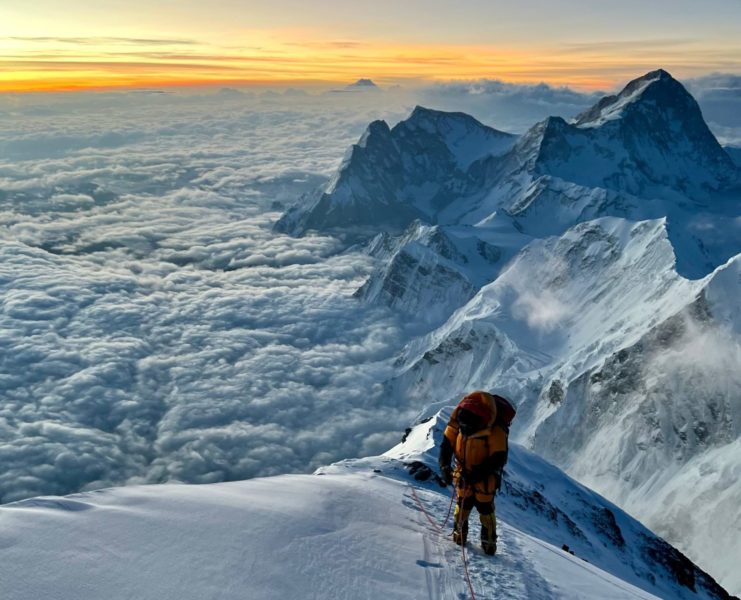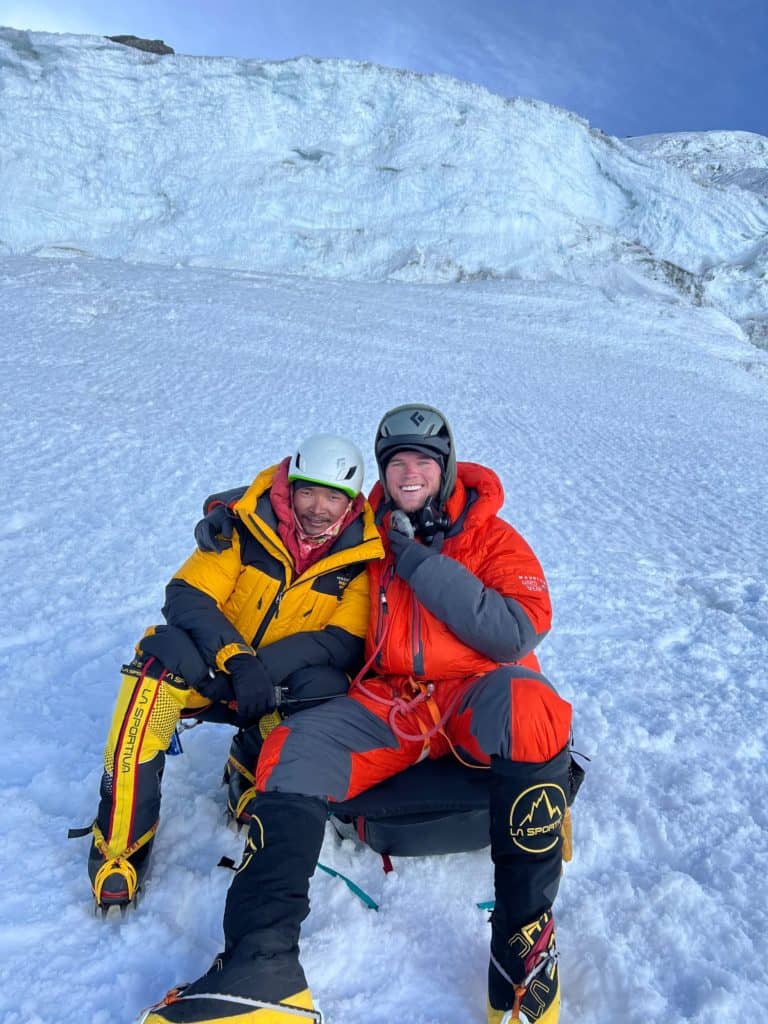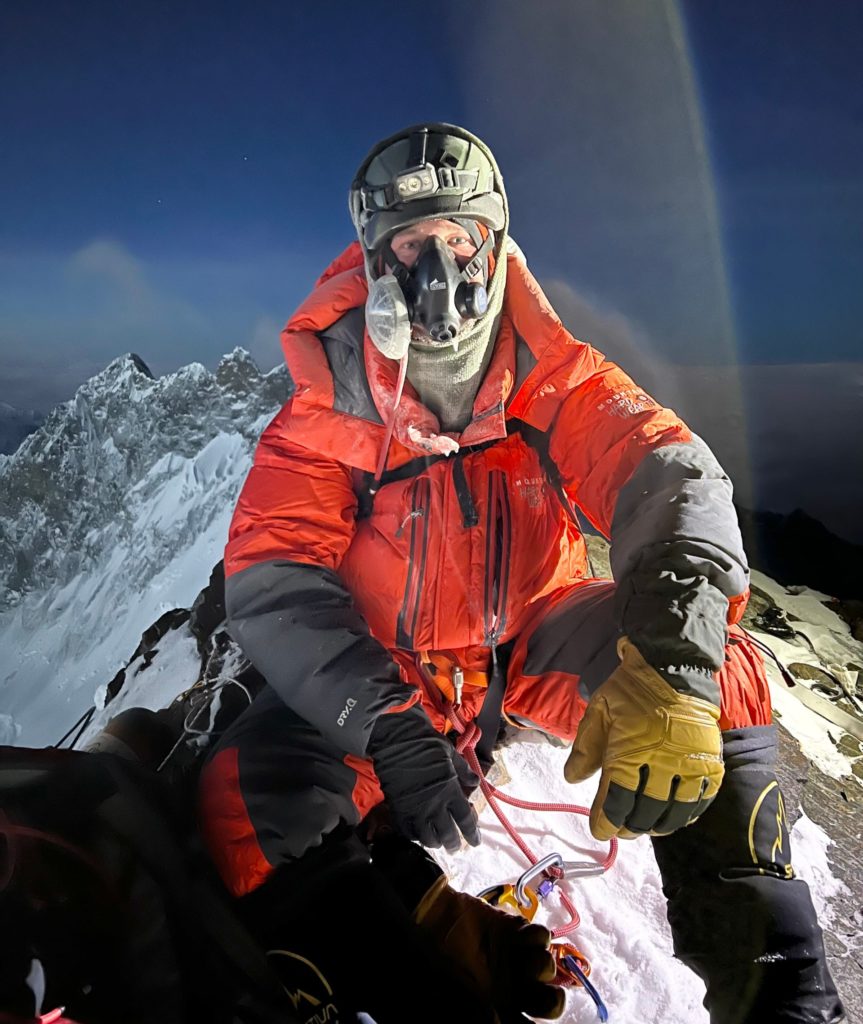Thrive
Inside the perilous ascent up the world’s tallest mountains

Part 2 of 2.
Cameron Kenny, the Pinellas native who recently scaled the world’s tallest and fourth-tallest mountains less than a day apart, called it a blessing that the notoriously unpredictable weather in the Himalayas cooperated during his trip.
While that meant temps at base camp were relatively balmy in the 40s and 50s, Kenny said the mercury dropped to between 20 and 30-degrees below zero on the summit. On May 20, the day he reached Mount Everest’s peak, the high was 72 in New York.
Kenny’s career took him to New York about five years ago, but he was born and raised in Clearwater (his hometown was a humid 86 degrees when he reached the Earth’s tallest summit).
“I’m still a Florida boy at heart,” said Kenny, 28. “So, it’s still very cold.
“With the wind chill, it could have been a bit colder … which was a concern of mine.”
When Kenny scaled Everest and the adjoining Mount Lhotse less than a day apart, he became one of an estimated 65 people in recorded history – and just 11 Americans – to accomplish the feat. Realizing the magnitude of such a trip, and with a younger brother diagnosed with Type 1 diabetes, Kenny formed a partnership with the Juvenile Diabetes Research Foundation (JDRF).
After returning home to recruit sponsors, including Praxis Medical Devices and Crown Automotive, Kenny raised $140,000 to support JDRF’s mission. While he is elated at the fundraising’s success, which doubled his original goal, Kenny has dreamed of climbing Everest since he was a boy growing up in Clearwater.
Kenny knew the dangers well, following the teams of adventurers attempting to climb earth’s highest peak. At 29,031.7 feet, the summit reaches nearly five and a half miles above sea level. The first successful ascent did not occur until 1953, and at least a third of mountaineers still fail to complete the trek.
Around five people die on the mountain annually, with 11 perishing during a particularly deadly climbing season in 2019. Since 1922, Everest has claimed an estimated 311 lives.
While Kenny said this season was a bit warmer and subsequently safer, the thought that he may not make it home was always in the back of his mind.
“It’s always been something I’ve thought about,” said Kenny.
According to climbernews.com, an estimated 200 bodies remain on Mount Everest. Due to the unrelenting conditions, the remains of around two-thirds of the people that perished on the mountain are still there.

Kenny (right) said the Sherpa guides made the trek possible called them “incredible” people.
The bodies of those that died trying to achieve what was once thought unachievable serve as grim reminders of the climb’s dangers. Kenny said adventurers must essentially step over the frozen corpses to continue on the trek in some spots. A daunting task made worse when struggling from exhaustion, a lack of oxygen and the bitter cold.
Kenny is not married but noted he has brothers, a mom who lives in Bellaire, and a dad that lives in St. Petersburg. Although he raised $140,000 for juvenile diabetes during his trip, Kenny said he could not help but wonder if trying to accomplish a lifelong goal was selfish, given the risks.
“It’s something I knew I had to do, or I’d be thinking about it the rest of my life,” he said. “I trained accordingly and went with the right group, so I tried to minimize the risks. Which I definitely felt like I did.
“But it’s kind of always in the back of your mind for sure, especially when you have to walk right by (the bodies).”
In addition to the unrelenting and unpredictable conditions in the mountains, Kenny said the Nepalese Sherpas do not like to touch the bodies. Very spiritual people, Kenny said they believe that is where the mother mountain decided the fallen climbers should rest eternally, and it is not their place to move them.
In any case, Kenny added said the bodies are simply too difficult to move at that altitude. He said once you reach Camp 2 and 3, the climb is too arduous to add the extra weight.
“You can barely get yourself down,” added Kenny.
Part of minimizing the risks included a month-long acclimation process. Once touching down in Nepal on April 2, Kenny said it is a eight to 10 day hike to reach Everest base camp. Along the way are several villages, and he said it was important to him to experience the Sherpa culture. He called the Nepalese people “incredibly hardworking” and “super generous.”
Base camp, said Kenny, is like its own little city. About 1,000 people were milling about, mostly Sherpa. In addition to the guides, the Himalayan natives also handle the day-to-day responsibilities, such as cooking.
Kenny said his team mostly sat around the camp for the first week, acclimating to the altitude. The group then climbed in rotations, first to Camp 1, then to Camp 2, and back down again. They would rest for a week in between climbs, allowing their bodies to generate more red blood cells and preparing their lungs for the summit.
After reaching base camp on April 10, Kenny reached Everest’s peak on May 20, although the final trek from base camp to the summit took about eight days.
“Definitely a long process, but obviously proved to work,” he said. “If I was to fly from New York and land at Everest base camp and go up there, there’s probably a 100% chance you would die.
“Even on oxygen, your body just wouldn’t be able to handle it.”

While Kenny called his Everest expedition a one-and-done event, he plans to run the New York City Marathon on behalf of the Juvenile Diabetes Research Foundation in November.
With his body acclimated to the altitude, he rested for just under 24 hours before climbing Mount Lhotse. He reached the world’s fourth-highest summit in a day.
Kenny noted that when he climbed Alaska’s Mount Denali – the highest peak in North America – last May, he humped about 120 pounds of gear. Thanks to the Sherpa, he “only” carried about 30 to 40 pounds up Everest. In addition to the significant amount of weight the Sherpa take up the mountain, they also hike ahead in rotations, leaving critical supplies at the next camp so that mountaineers have everything they need when they reach a resting point.
“The Sherpa are absolutely incredible,” said Kenny. “None of this is possible without them – in a million different ways.”
Kenny’s team started with 13 climbers and finished with nine. He said the attrition was due to chest issues or the inability to acclimate.
Some days were more arduous than others, said Kenny. He explained that hiking “straight up” for 12 hours can sap a person’s motivation. However, he said he felt pretty good physically during the trip, with the mental aspects proving more challenging.
“The mental game of sitting there for two months not knowing if all your hard work is going to pay off,” he added.
In the end, Kenny achieved his lifelong goal. He called reaching the summit an emotional experience and said he shed a few tears on the peak. He also forged a close bond with his climbing team.
“People that were strangers just two months prior, and now I’m standing with them on the summit, hugging and jumping up and down and … feeling like they’re my best friends,” said Kenny. “It’s something I’ll remember and cherish forever.”
Kenny said Everest and Lhotse was a “one-and-done” trip, regardless of reaching the peak. However, he hopes to continue his relationship with JDRF and plans to run the New York City Marathon on the organization’s behalf in November. He is also contemplating entering the Talisker Whisky Atlantic Rowing Challenge, where global teams race across the ocean in small rowboats.
Kenny said he completed the climb for several reasons, although he is still discovering what those are, and many remain unknown. He established a love for the outdoors growing up in Pinellas but also noted he was “kind of afraid to be alone at all times.” He said mountaineering forced him to travel, eat and accomplish things he was not sure were possible by himself.
“And throw myself into positions with other people – that I never would have in a million years,” said Kenny. “It’s kind of opened me up to a whole new world.”
Read part one here.







